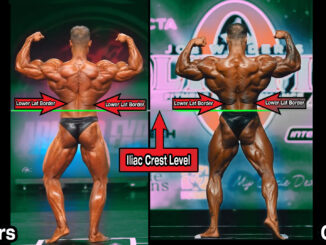
Jurassic Gorilla https://jurassicgorilla.com
Begins at 2:27 on above video.
The prospect of halting or even reversing biological aging has been a topic of both excitement and controversy in the field of medical research. While the notion remains the subject of debate, there are ongoing efforts to explore potential therapeutic interventions aimed at achieving this ambitious goal. One prominent player in this arena is the SENS Research Foundation, a non-profit organization committed to advancing research pathways that could lead to engineered negligible senescence in humans. These research pathways represent a set of strategies that, if successful, could significantly extend human lifespan and reduce the effects of aging.
One of the notable figures in the pursuit of age reversal is Liz Parrish, the CEO of BioViva. In 2015, Parrish made headlines by undergoing gene therapy with the ambitious objective of not merely halting the aging process but actually reversing it. While her self-experimentation raised eyebrows, she reported feeling more energetic as a result of the treatment. However, the long-term effects and safety of such interventions are still under investigation, making it a subject of ongoing study and scrutiny.
For several decades, scientists have been exploring the concept of suspended animation as a potential means to extend mammalian lifespan indefinitely. This approach involves placing organisms or tissues in a state of metabolic hibernation, effectively slowing down the processes associated with aging. Some proponents of suspended animation believe that, with the right technology, it might be possible to maintain organisms in a state of suspended animation for extended periods.
One particularly controversial area of research is cryonics, the practice of cryopreserving human bodies in the hope that future advancements in science and medicine will make it possible to revive them. Cryonics operates on the premise that individuals declared clinically dead by current medical and legal standards might still possess the potential for revival based on information-theoretic criteria. While the concept remains speculative, it has garnered support from a dedicated community of advocates.
The goal of contemporary cryonics procedures is to achieve tissue vitrification, a process that was first successfully used to cryopreserve a whole viable organ in 2005. Vitrification aims to prevent the formation of ice crystals within tissues, which can cause damage. By preserving tissues in a vitrified state, it is hoped that they can be revived and restored to full function at a later date when the requisite technology becomes available.
In addition to cryonics, there are other proposals related to suspended animation, including the concept of chemical brain preservation. This approach seeks to develop techniques for long-term, high-fidelity storage of mammalian brains. The Brain Preservation Foundation, a non-profit organization, offers a substantial cash prize as an incentive for the demonstration of methods that can achieve this challenging objective.
These pioneering research endeavors underline the profound interest and curiosity surrounding the possibilities of extending human lifespan and potentially reversing the effects of aging. While the outcomes remain uncertain, the pursuit of such goals continues to push the boundaries of scientific exploration and provoke important ethical and philosophical discussions regarding the nature of life, death, and the human experience.
Read latest report here.








Be the first to comment